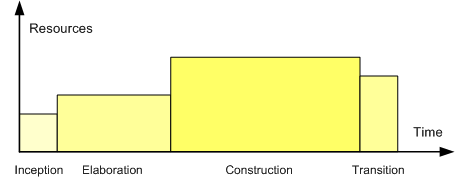|
Oracle Unified Method
The Oracle Unified Method (OUM), first released by Oracle Corporation in 2006, is a standards-based method with roots in the Unified Process (UP). OUM is business-process and use-case driven and includes support for the Unified Modeling Language (UML), though the use of UML is not required. OUM combines these standards with aspects of Oracle's legacy methods and Oracle implementation best-practices. OUM is applicable to any size or type of information technology project. While OUM is a plan-based method – that includes extensive overview material, task and artifact descriptions, and associated templates – the method is intended to be tailored to support the appropriate level of ceremony required for each project. Guidance is provided for identifying the minimum subset of tasks, tailoring the project approach, executing iterative and incremental project planning, and applying Agile techniques. Supplemental guidance provides specific support for Oracle products, tools, and te ... [...More Info...] [...Related Items...] OR: [Wikipedia] [Google] [Baidu] |
Oracle Corporation
Oracle Corporation is an American multinational computer technology corporation headquartered in Austin, Texas. In 2020, Oracle was the third-largest software company in the world by revenue and market capitalization. The company sells database software and technology (particularly its own brands), cloud engineered systems, and enterprise software products, such as enterprise resource planning (ERP) software, human capital management (HCM) software, customer relationship management (CRM) software (also known as customer experience), enterprise performance management (EPM) software, and supply chain management (SCM) software. History Larry Ellison co-founded Oracle Corporation in 1977 with Bob Miner and Ed Oates under the name Software Development Laboratories (SDL). Ellison took inspiration from the 1970 paper written by Edgar F. Codd on relational database management systems ( RDBMS) named "A Relational Model of Data for Large Shared Data Banks." He heard about t ... [...More Info...] [...Related Items...] OR: [Wikipedia] [Google] [Baidu] |
Unified Process
The Unified Software Development Process or Unified Process is an iterative and incremental software development process framework. The best-known and extensively documented refinement of the Unified Process is the Rational Unified Process (RUP). Other examples are OpenUP and Agile Unified Process. Overview The Unified Process is not simply a process, but rather an extensible framework which should be customized for specific organizations or projects. The ''Rational Unified Process'' is, similarly, a customizable framework. As a result, it is often impossible to say whether a refinement of the process was derived from UP or from RUP, and so the names tend to be used interchangeably. The name ''Unified Process'' as opposed to '' Rational Unified Process'' is generally used to describe the generic process, including those elements which are common to most refinements. The ''Unified Process'' name is also used to avoid potential issues of trademark infringement since '' ... [...More Info...] [...Related Items...] OR: [Wikipedia] [Google] [Baidu] |
Use Case
In software and systems engineering, the phrase use case is a polyseme with two senses: # A usage scenario for a piece of software; often used in the plural to suggest situations where a piece of software may be useful. # A potential scenario in which a system receives an external request (such as user input) and responds to it. This article discusses the latter sense. A ''use case'' is a list of actions or event steps typically defining the interactions between a role (known in the Unified Modeling Language (UML) as an ''actor'') and a system to achieve a goal. The actor can be a human or another external system. In systems engineering, use cases are used at a higher level than within software engineering, often representing missions or Project stakeholder, stakeholder goals. The detailed requirements may then be captured in the Systems Modeling Language (SysML) or as contractual statements. History In 1987, Ivar Jacobson presented the first article on use cases at the OOP ... [...More Info...] [...Related Items...] OR: [Wikipedia] [Google] [Baidu] |

